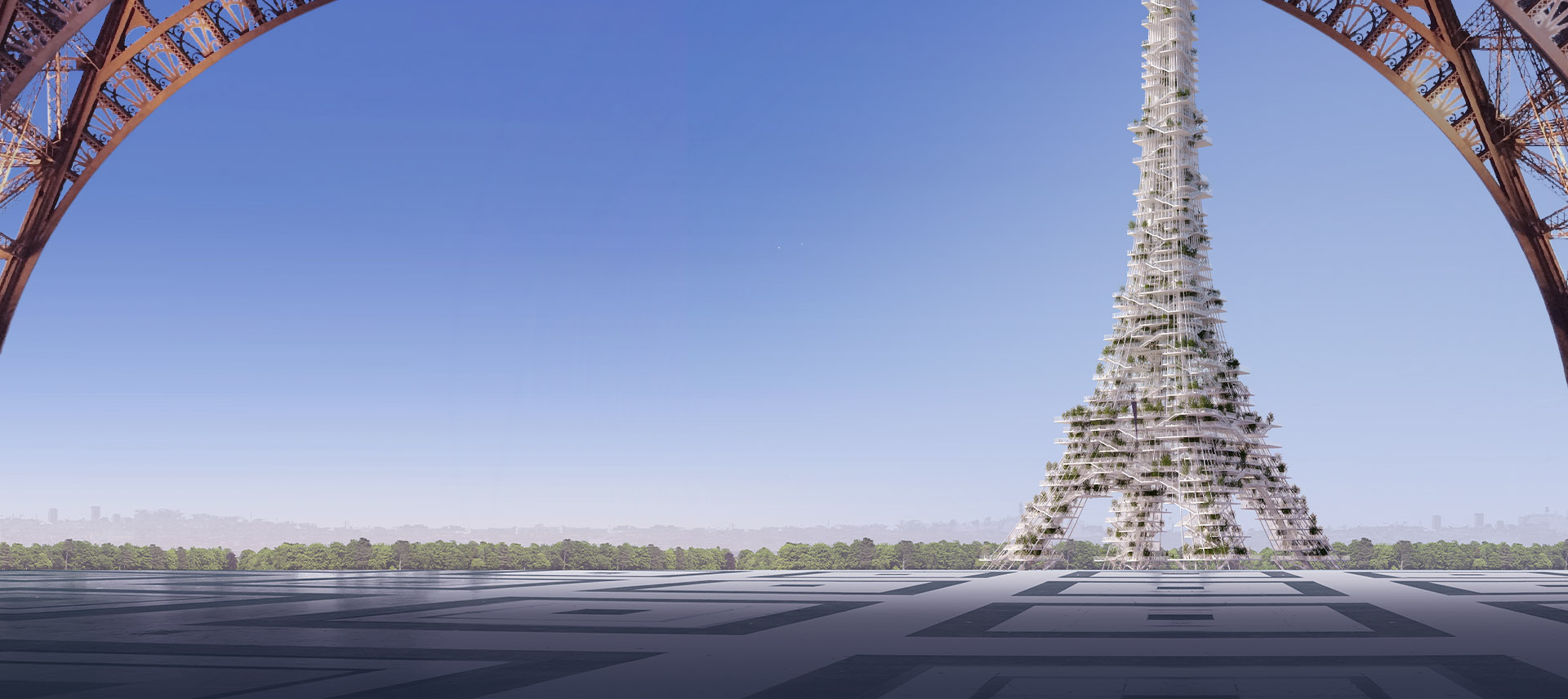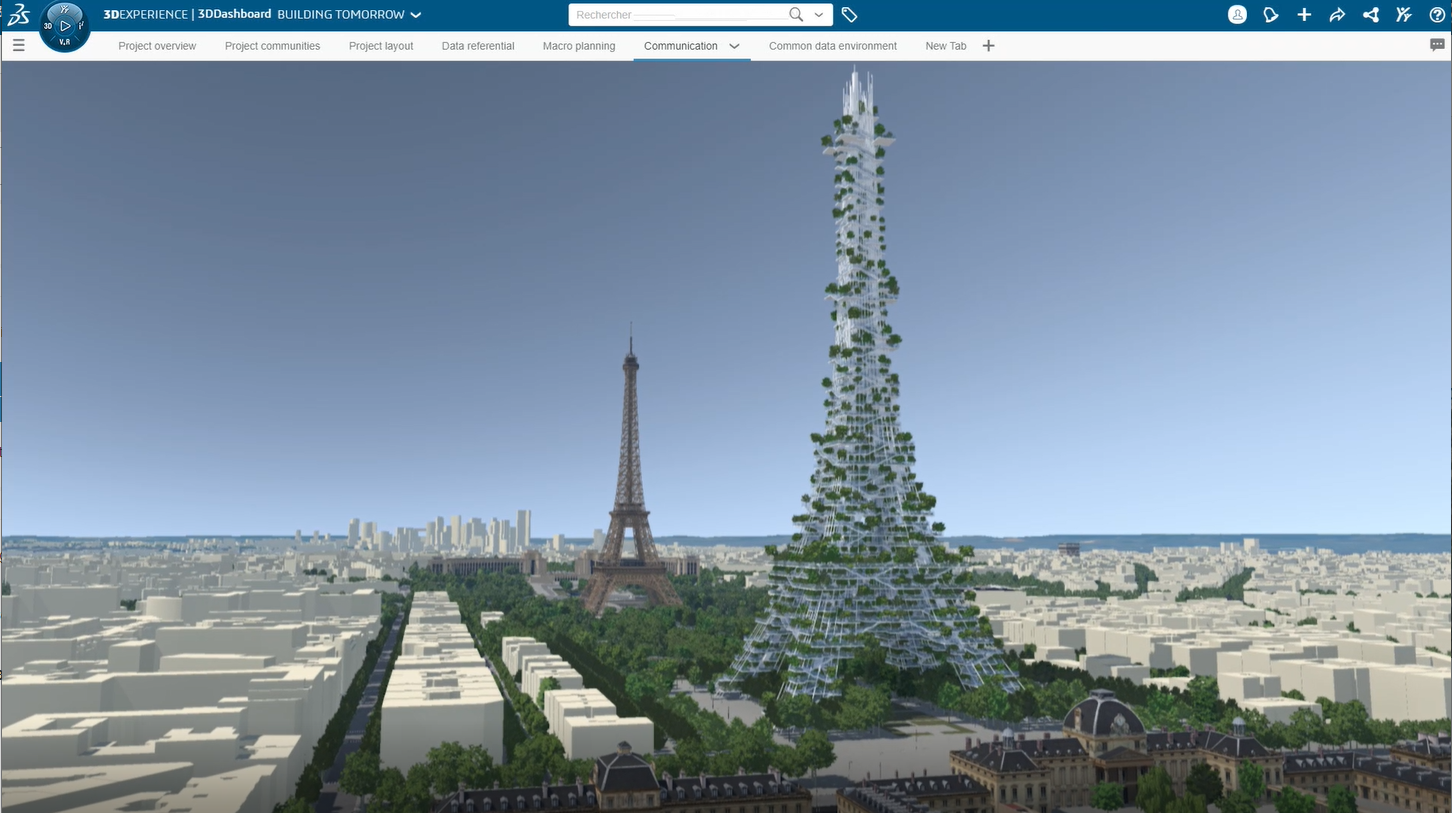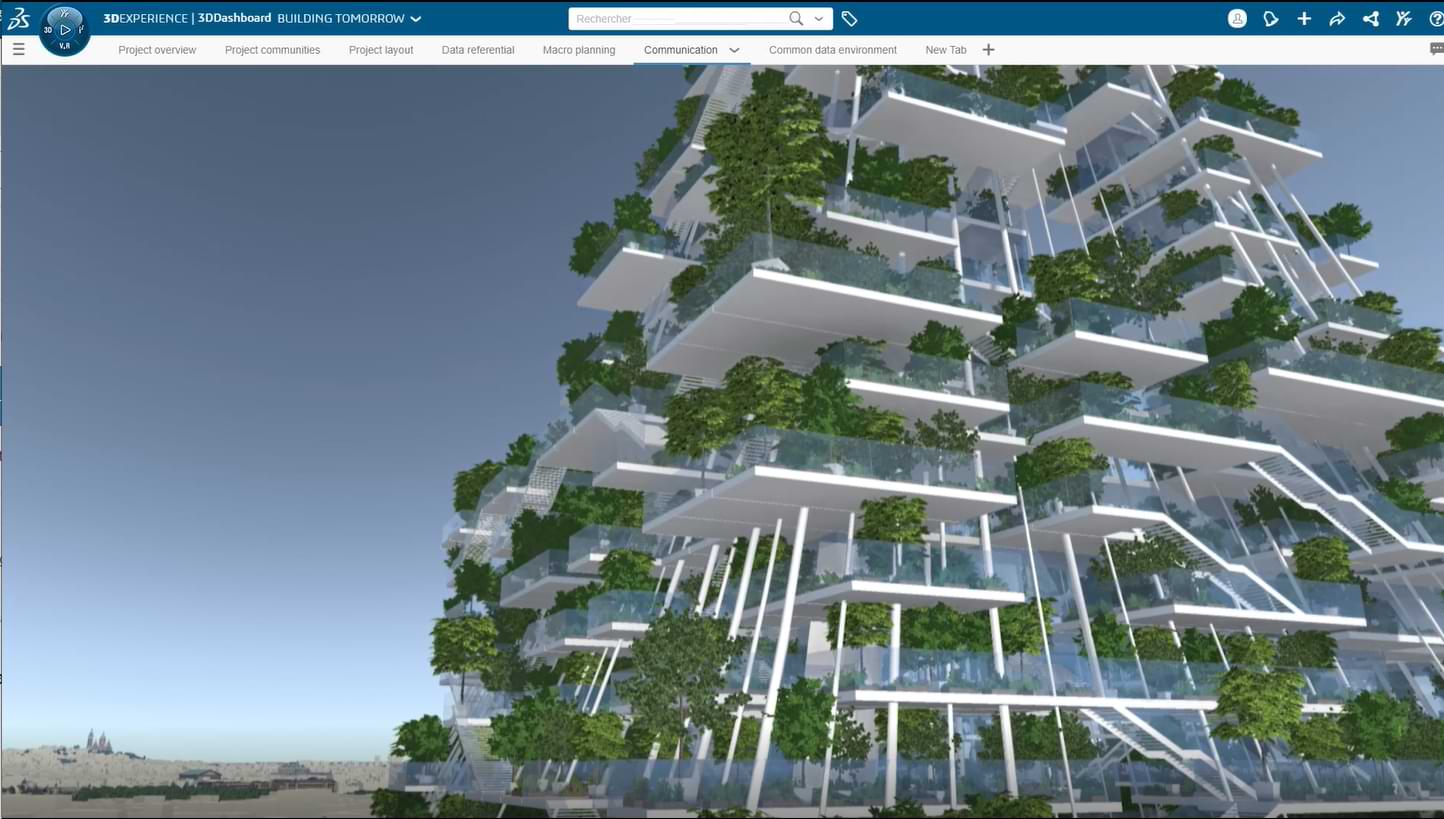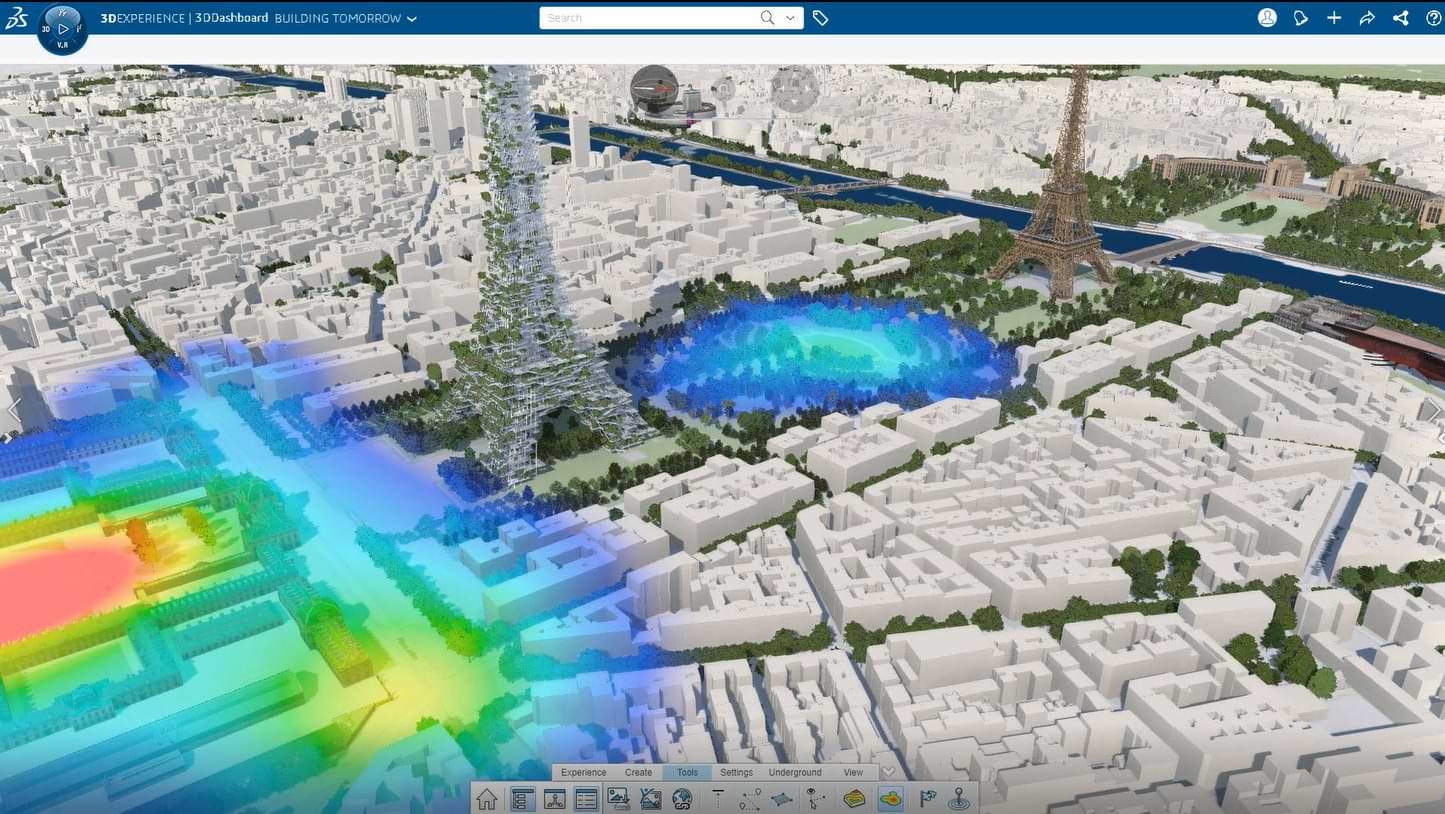Dassault Systèmes Reimagines the Eiffel Tower in Disruptive Project for More Sustainable Infrastructure and Cities

More than 130 years after the construction of the Eiffel Tower, Dassault Systèmes has reimagined this iconic landmark to demonstrate how virtual worlds can drive the transformation of cities and infrastructure for a more sustainable future.
The “Building Tomorrow” program assembled a team of Dassault Systèmes experts spanning multiple industries to use the 3DEXPERIENCE platform to design and build a low-carbon, circular and regenerative version of the tower that could address major sustainability challenges such as accelerated urbanization, greenhouse gas emissions and energy consumption. The project aimed to show how public authorities, engineers, architects, logistics experts and builders can work together in new ways to enable more circular practices across the value chain that make a positive impact at any scale and improve quality of life.

Starting from an exclusive design by the architect Nicolas Laisné, the team used the 3DEXPERIENCE platform to create a virtual twin of the tower – a vertical garden adorned with 18,038 trees (which corresponds to the number of metallic parts of the Eiffel Tower), 5,500 square meters (59,202 square feet) of greenhouses and garden sheds, 451 plant species, and 200 experimental and shared gardens. By experiencing the virtual twin with real-time, data-driven insights from across the value chain, the team demonstrated that large infrastructure projects can be built more sustainably through collaborative design among all stakeholders, optimized operations and resource management, low-carbon manufacturing of materials, sustainable logistics planning and productized construction.

For example, the “Building Tomorrow” team analyzed the impacts of different construction scenarios such as the new tower’s height on the neighborhood in terms of shadow, airflow and heat, as well as modeled the water consumption needs of its vegetation. It also optimized the sourcing, transportation and manufacturing process of steel for the structure without compromising its strength and performance, and applied the manufacturing industries’ principle of productization to the design and construction process. Dassault Systèmes’ Life Cycle Assessment solution played a key role in the team’s strategic decision-making by allowing them to assign environmental impact scores to each process along the life cycle – from sourcing raw materials to delivering finished goods.

The “Building Tomorrow” project, including a two-meter-high (six feet six inches), 3D-printed replica of the tower, will be on display at Dassault Systèmes’ stand – Gran Via, Hall 2, Level 0, Street D, Stand 111 – at the Smart City Expo World Congress in Barcelona, November 15-17, 2022.
For more information about Dassault Systèmes’ “Building Tomorrow” program and the different stages of the value chain: https://www.3ds.com/insights/building-tomorrow
